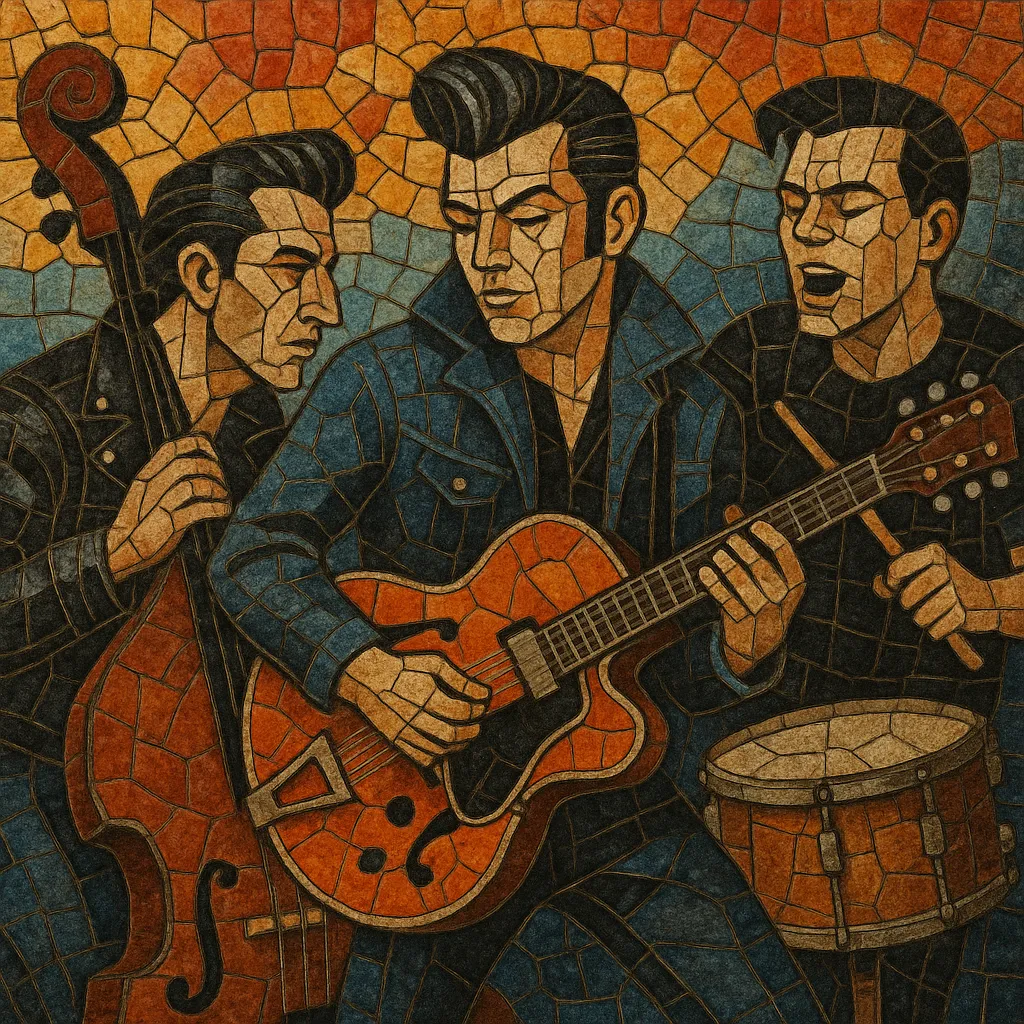
Neo-rockabilly is a late-1970s/early-1980s revival and modernisation of 1950s rockabilly, blending the twangy guitar, slap upright bass, and backbeat-driven swing of the original style with the speed, edge, and concise songcraft of punk and new wave.
It typically features hollow-body electric guitars with slapback echo, percussive slap double bass lines, and snare-forward drumming that alternates between shuffles and straight rock pulses. Vocals often channel classic rockabilly hiccups and croons but with a brighter, tighter production aesthetic and higher tempos. Lyrical themes commonly celebrate nightlife, romance, cars, and retro Americana filtered through contemporary attitude.
The genre developed a parallel visual culture—greaser hair, vintage threads, and tattooed subcultural flair—while remaining musically lean, danceable, and resiliently roots-oriented.
Neo-rockabilly emerged in the United Kingdom during the late 1970s as part of a broader roots revival that ran parallel to punk. UK pub rock provided a live circuit and a taste for back-to-basics energy, while the Teddy Boy subculture kept a 1950s aesthetic alive. Bands took the core rockabilly toolkit—slapback guitar, upright bass, and swing-inflected beats—and pushed tempos and attack toward the punk end of the spectrum.
The scene gained international visibility when the Stray Cats—an American trio—relocated to the UK and scored chart hits, proving that vintage style could thrive with modern punch. Alongside British and European acts such as The Polecats, Matchbox, Restless, The Blue Cats, and The Shakin' Pyramids, neo-rockabilly achieved mainstream and indie traction, club danceability, and a recognizable visual identity.
While faithful to rockabilly’s 12-bar blues foundations and guitar slapback, neo-rockabilly favored tighter, brighter production, brisker tempos, and a crisper rhythmic drive. The upright bass slap became even more percussive, drum parts leaned into rimshots and snare accents, and guitars cut through mixes with Filter’Tron or single-coil bite. Vocals balanced classic hiccup phrasing with contemporary punch.
The style’s kinetic blend influenced adjacent scenes: psychobilly amped up the aggression and horror aesthetics, and cowpunk carried twang into punk contexts. Neo-rockabilly spread across Europe, the U.S., and Japan, sustaining dedicated festivals, dance scenes, and vintage fashion markets.
From the 1990s onward, periodic revivals and retro trends—swing revivals, roots rock resurgences, and vinyl culture—kept neo-rockabilly visible. Veteran artists continue touring, and new bands adopt the idiom with modern recording tools, ensuring the genre’s dancefloor vitality and evergreen appeal.

